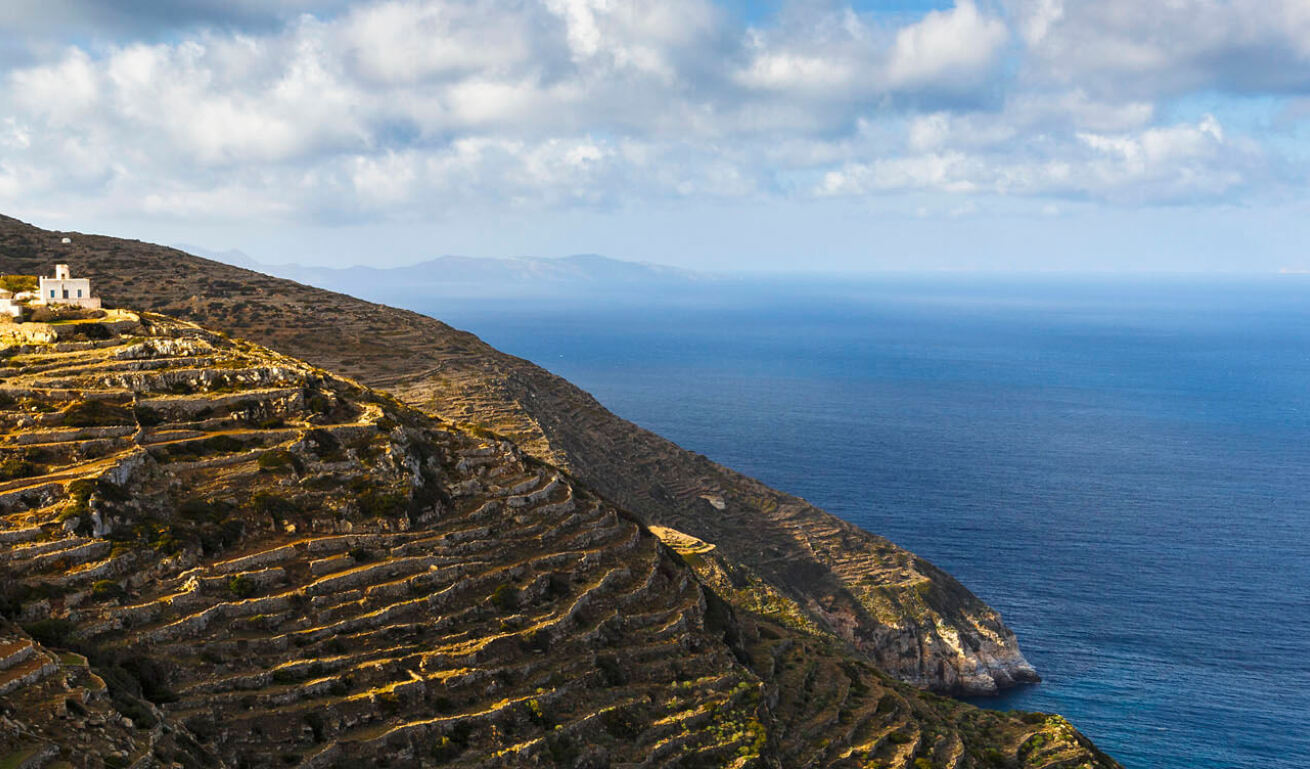
Sikinos
NOW
6 °C
Next 5 days
-
FRI
12 °C
-
SAT
17 °C
-
SUN
17 °C
-
MON
17 °C
-
TUES
18 °C
Source: National Observatory of Athens /meteo.gr
It had been occupied since the Mycenaean Period and was also named Oinoe, the name taken after the numerous vineyards and its fine wine (oinos in Greek means wine).
Around the Island
It is the island’s picturesque harbour with the whitewashed houses. This small fishing village is the centre of everyday life with many accommodation facilities, tavernas, the magnificent beach as well as nightlife, with bars. One can swim at the beach of Alopronia, as well as taking a boat trip to visit Agios Georgios, Agios Panteleimonas, Dialiskari, Santorineika and Petra.
Chora
It is one of the most beautiful capital towns in the Cyclades, with stone manors and narrow alleys. It has two settlements, the oldest of which is called Kastro (Castle), also called Sikinos, while the second settlement, Chorio (the Greek word for village), had been built in recent years. The square of Chora has traditional cafés and shops and is the centre of social life on the island.
Stroll around the narrow alleys and explore the manors, some of the best samples of traditional Cycladic architecture. Pay a visit to the church Pantanassa-Timios Stavros, on the east side of the stone paved square. It was built in 1787 and is known for its wood carved and gold gilded chancel screen of exceptional art and its marvellous post byzantine icons attributed to the Cretan School of icon painting.
Pass by the three windmills, at the highest point of Chora where the scenery is marvellous. Climb up the monastery of Zoodochos Pigis (meaning Life Giving Fountain) built at the top of a cliff, in an amazing location and gives at first the impression of a castle. Enjoy a breathtaking sunset from there.
At Chorio, visit the Folklore Museum (Laografiko Mouseio), which is accommodated in a renovated old olive press building in Chora as well as the Byzantine and Post Byzantine Collection (in Kastro). Pay a visit to the Byzantine church of Christ and the churches of Agia Anna, Agios Vasilios and of the Eisodia tis Theotokou (Presentation of the Virgin Mary).
Chora is the starting point for the trails that cross the entire island. Visit the monastic group of Episkopi, 4 km southwest. At Episkopi one can see the most important samples of ancient inhabitancy of the island. The temple of the Koimesis of Panagia (Dormition of Virgin) is the result of the reconstruction of a Roman mausoleum of the 3rd century A.D.
Explore the ancient settlements, in the Agia Marina area (south of Episkopi), where remains of ancient buildings are preserved. A second settlement is located at the northeast side of the island, close to Cape Malta.
Byzantine monastery of Episkopi and the chapel of Agia Marina are definitely worth visiting, as they also offer a lovely view from their location on the hilltop.
Last but not least, visit the Mavri Spilia (Black Cave), the biggest of the caves in the island and Palaiokastro with ruins of ancient settlement.
One of the top highlights of the island is its Winery. You can visit it on your way back from Episkopi. It is located on the northwest side of Sikinos, 2.5 km from Chora. Bear in mind that it operates exclusively with renewable energy sources. After your wine tour, relax and enjoy a wine tasting or have a proper meal with traditional flavours, plenty of wine and affordable views of the Aegean endless blue on one hand and the vineyard on the other.
Before leaving the island, don’t forget to pack back home delicious thyme honey, pasteli (sesame bars), some local cheese and capers.













